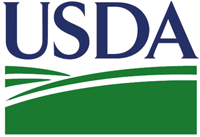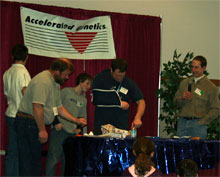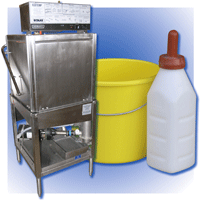
In a press conference held Monday at 3 p.m. (EST), Dr. John Clifford,Chief Veterinary Officer with the Animal Plant Health Inspection Service confirmed that a Santa Gertrudis beef cow on a farm in Alabama has tested positive for BSE. An initial rapid test taken March 10th came back inconclusive, indicating the possibility that the cow might be infected. Results from a second rapid test were positive.
Following standard protocol, tissue from the suspect animal was tested using the Western Blot test. Results of the Western Blot test confirmed the animal tested positive for BSE.
The cow resided on the farm in Alabama for less than one year. Authorities are currently tracking the epidemiological history of the animal to isolate any other suspect cows. The veterinarian who treated the animal indicated that the cow was older, quite possibly older than ten years of age. This would mean the animal was born prior to the ruminant to ruminant feed ban, and thus could have consumed feed contaminated with the BSE prions.
The veterinarian also confirmed the cow was non-ambulatory at the time it was treated. The cow was euthanized by the veterinarian and buried on the farm. The animal did not enter the feed or food chain.
At this time, APHIS is unsure of the origin of the animal as it had only resided on the Alabama farm for less than one year.
This discovery comes as U.S. trade negotiations continue with Japan to try to convince them to re-open their borders to the import of U.S. beef. Clifford says he does not anticipate this discovery will impact the situation with Japan, aluding to the age of the animal and the fact that it was born prior to the feed ban. Clifford said they would refer to international guidelines of sound science.




 Our sponsor,
Our sponsor,  The weekend also included some great educational sessions including a presentation and round table session about Animal Health and Vaccines. On Sunday morning everyone participated in a Family Farm Safety Session that included a mock farm accident with a 911 call, an activity with adults and children making peanut butter sandwiches with limbs bound as if they lost or injured them in a farm accident, and an activity showing various farm liquids that look like juice, water, or kool aid to children. In addition, producers had the opportunity to network and learn from each other and have some fun away from the farm!
The weekend also included some great educational sessions including a presentation and round table session about Animal Health and Vaccines. On Sunday morning everyone participated in a Family Farm Safety Session that included a mock farm accident with a 911 call, an activity with adults and children making peanut butter sandwiches with limbs bound as if they lost or injured them in a farm accident, and an activity showing various farm liquids that look like juice, water, or kool aid to children. In addition, producers had the opportunity to network and learn from each other and have some fun away from the farm! In Sullivan County, NY a
In Sullivan County, NY a  I remember having to wash bottles. Of course that was for my kids. Then along came dishwashers and they made things easier. Well,
I remember having to wash bottles. Of course that was for my kids. Then along came dishwashers and they made things easier. Well, 
 Are you a fan of the
Are you a fan of the